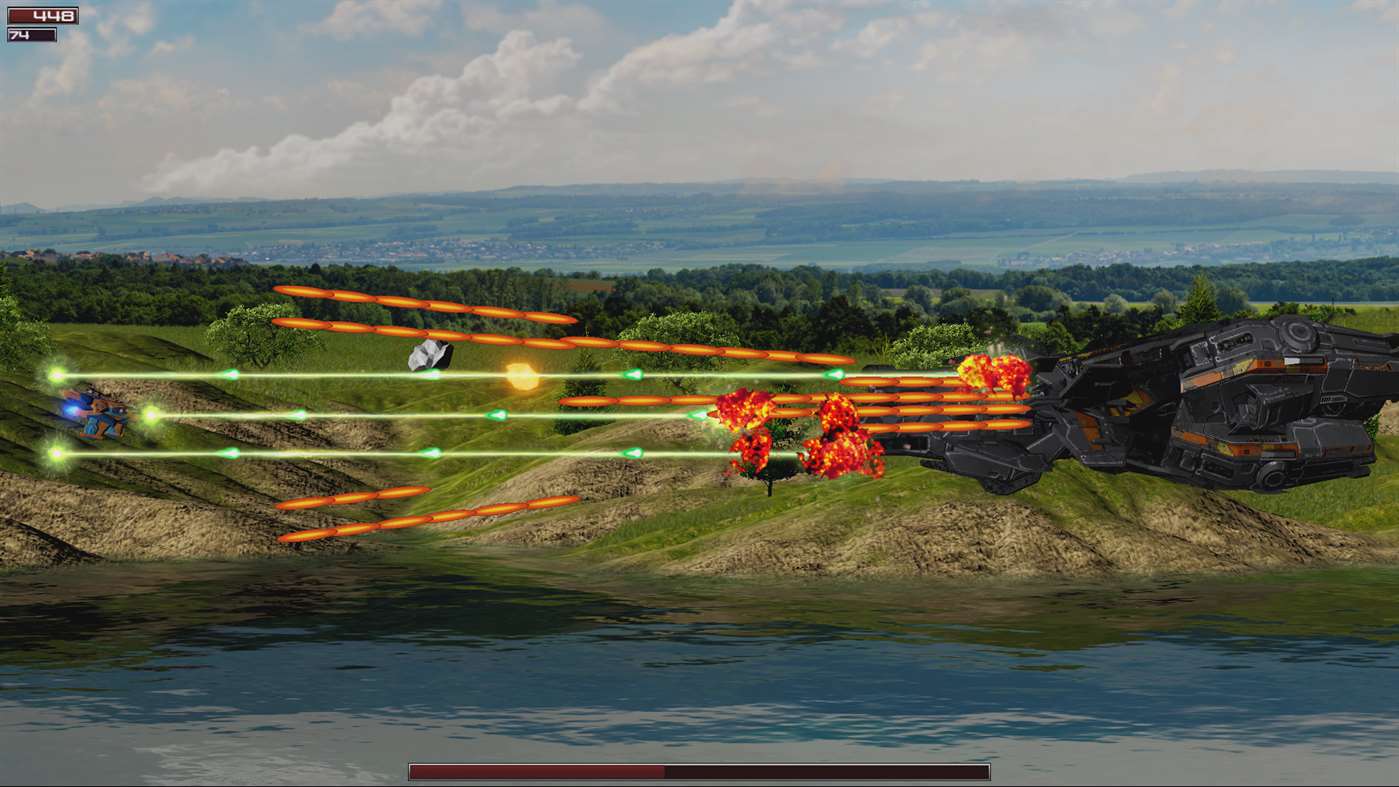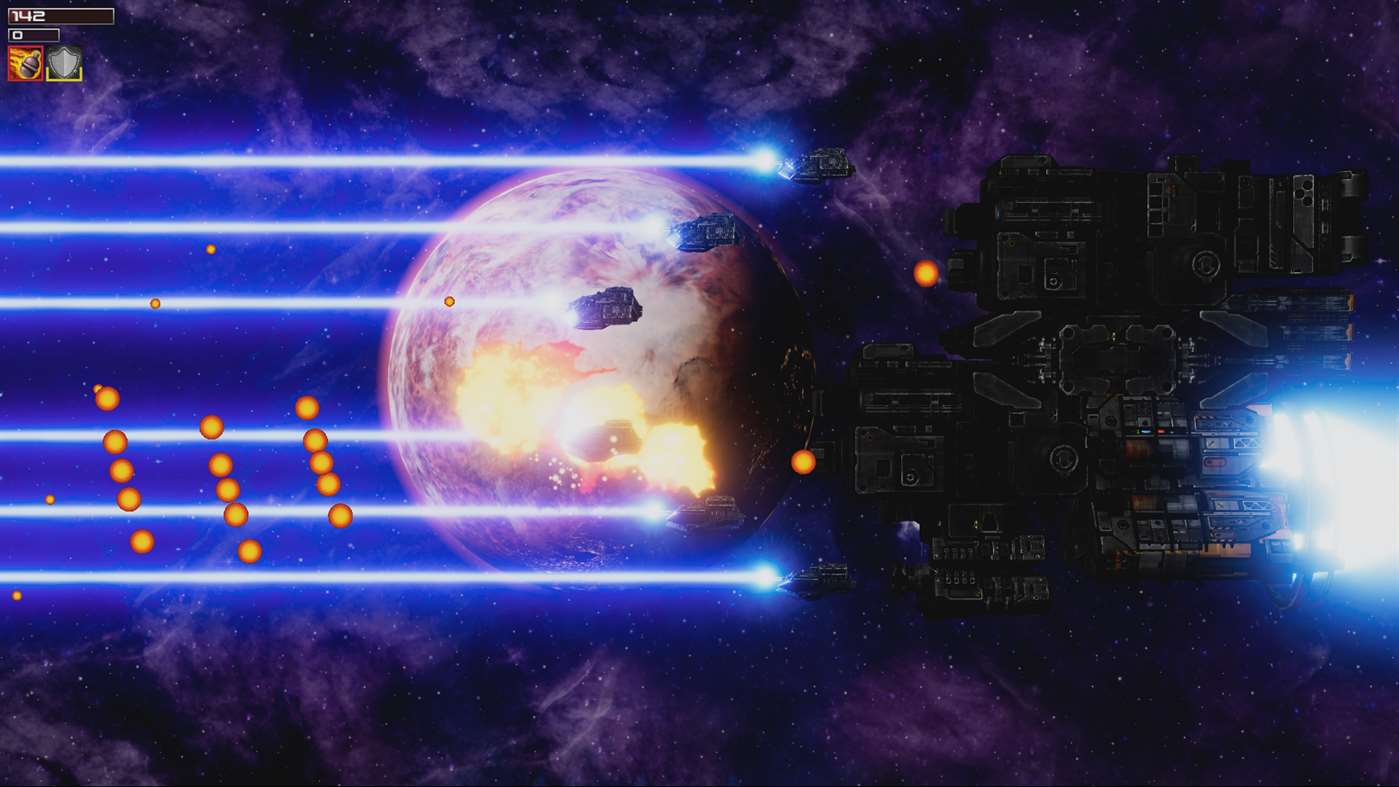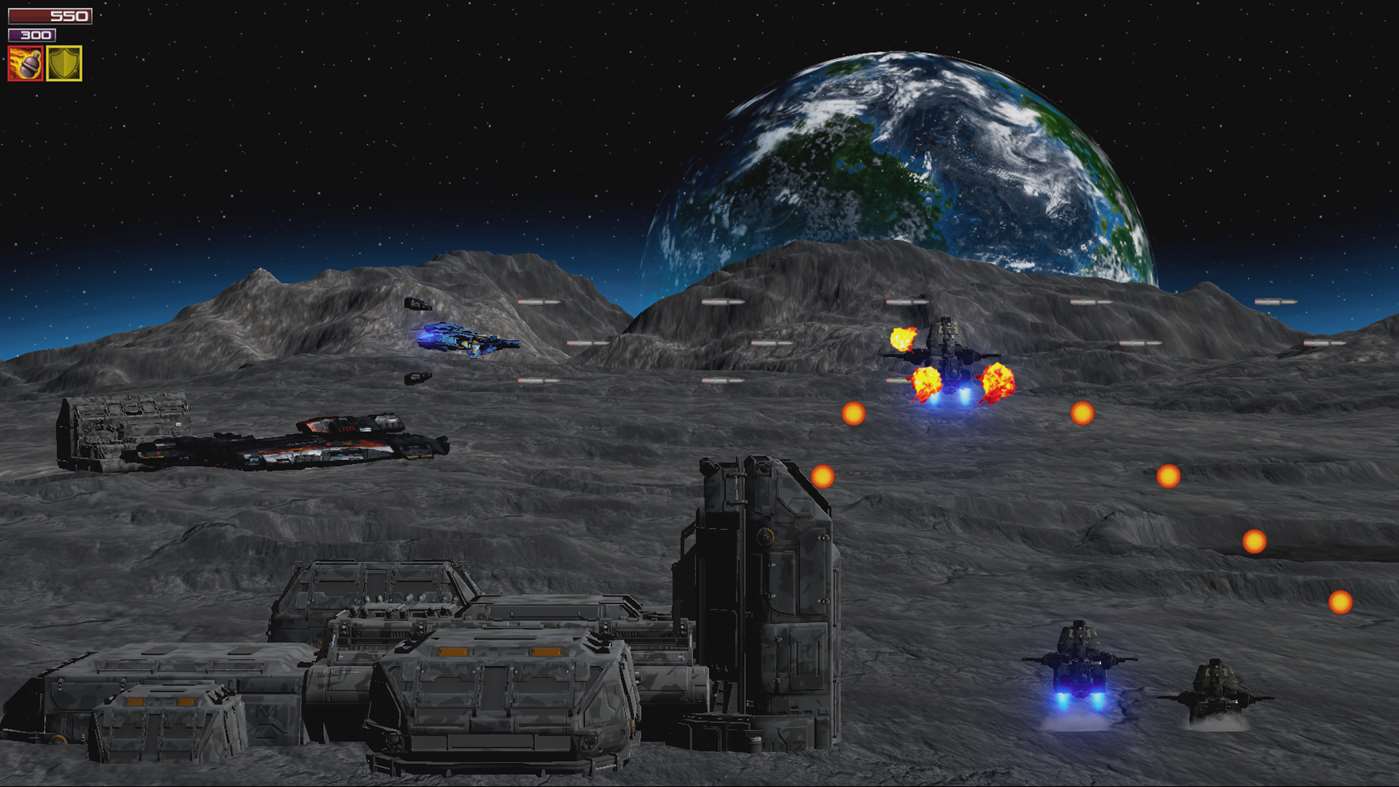Regardless of which political party or god you worship, we can all agree that we need the sun to survive. Without that giant ball of fire’s lifesaving heat, we would all turn into people flavored popsicles. This is the premise of the shmup Final Star.
The game offers a paper thin narrative revolving around the battle to save the last star in the galaxy from being taken over by alien forces. It doesn’t add to the experience in any meaningful way, but instead provides a backdrop that has been done time and time again in countless games from this genre and others. What makes this stand out from the pack is the creative use of satellites. We’re not talking about the ones your crazy uncle Ed who lives in the middle of nowhere uses to get his CNN, but the ones that hover around your spacecraft that allow you to change the speed and damage output of your ship on the fly. You can pull the floating orbs close to your ship, allowing you to deal massive amounts of damage at the sake of speed, or you can spread them out, allowing you to fire at a rapid pace with less damage.

In addition to the satellite system, each of the ships come standard with a laser ability, which is used as a defensive option that will clear enemy gunfire from your path. While not nearly as game changing as the satellites, this is a nice feature that few games offer. The problem is, these are both abilities that are put into play from the get go, leaving little room to get acclimated to the game, let alone master it during the first few critical levels, which are more difficult than most fans may be used too.
The gameplay fits the token shmup tropes to a T, tasking you with mowing down waves of enemies as you work your way through the levels, collecting scrap and gold. You’ll use these in exchange for permanent upgrades to your ship, which will be extremely important when dealing with the punishing difficulty that rarely lets up. The upgrades themselves are a bit costly, and will require a fair amount of grinding if you’re going for the long game in terms of upgrading your shuttles for subsequent playthroughs.

Outside of standard gameplay which can be completed solo or via couch co-op, there is a Tetris meets Bejewled mini-game that allows you to match up groups of symbols to earn additional resources. As someone who enjoys these style games, I found this method to be much more effective in accumulating resources than the standard gameplay; however, the switch between modes feels jarring, leaving it slightly out of place.
The presentation works on most fronts, with only a few missteps to be found. The 3D rendered ships as well as the enemy forces are up to par visually, and rarely blend into the background, despite the backdrops looking slightly off in most cases, almost like they were added post production via green screen on a SyFy movie of the week. The music used doesn’t fare nearly as well, coming across as overly dramatic in comparison to the arcade feel of the game, resulting in me turning it off completely early into my journey. My biggest nagging concern is the decision to use the left and right directions on the analog stick to controlling the satellites, when a vertical option would’ve been more intuitive. With no option of changing this to be found, it took some time to get used to, leaving me frustrated due to a number of deaths that were the result of this limitation.

The overall difficulty provides a steep yet attainable challenge, which will make even veteran shmup fans’ thumbs sore. Even with a few minor missteps, Final Star is a worthy addition to any the genre lover’s library thanks to the unique satellite system. .
7 out of 10
Pros
- The Satellite Mechanic
- Plenty of Replay Value
Cons
- Questionable Button Placement
- BGM
Final Star was developed by Dynamic Voltage Games and published by Enjoy These Pixels. It was released on December 20th, 2018 for X1 at $14.99. The game was provided to us for review on X1. If you’d like to see more of Final Star, check out the developer’s Facebook.
Here at GBG we use a rating method that you are more than likely familiar with – a scale of 1 to 10. For clarification, we intend on using the entire scale: 1-4 is something you should probably avoid paying for; 5-7 is something that is worth playing, but probably not at full price; 8-10 is a great title that you can feel confident about buying. If you have any questions or comments about how we rate a game, please let us know.
Check out OpenCritic for a better idea of how our review stacks against others.